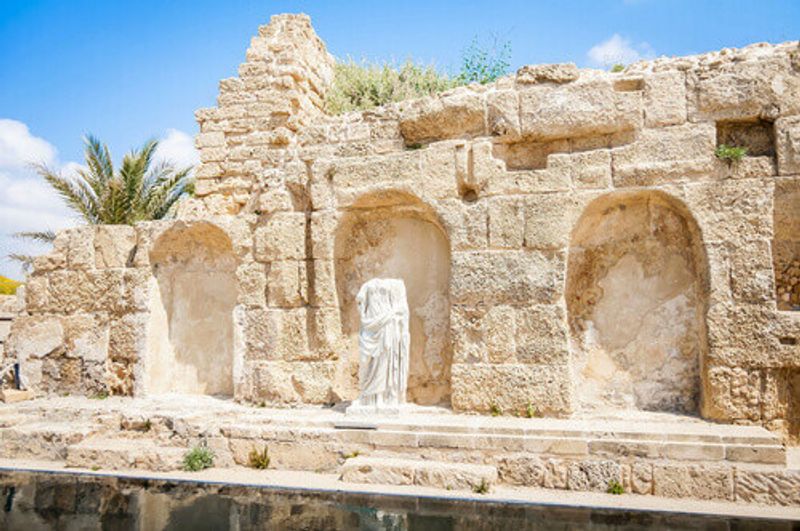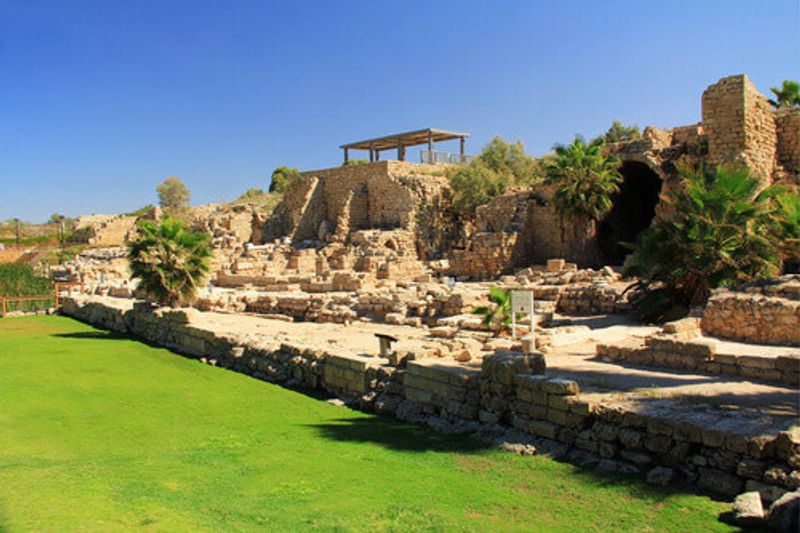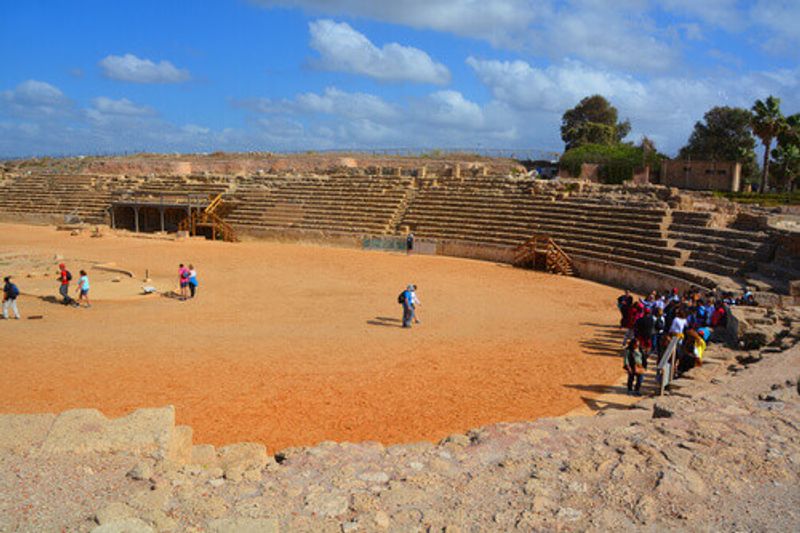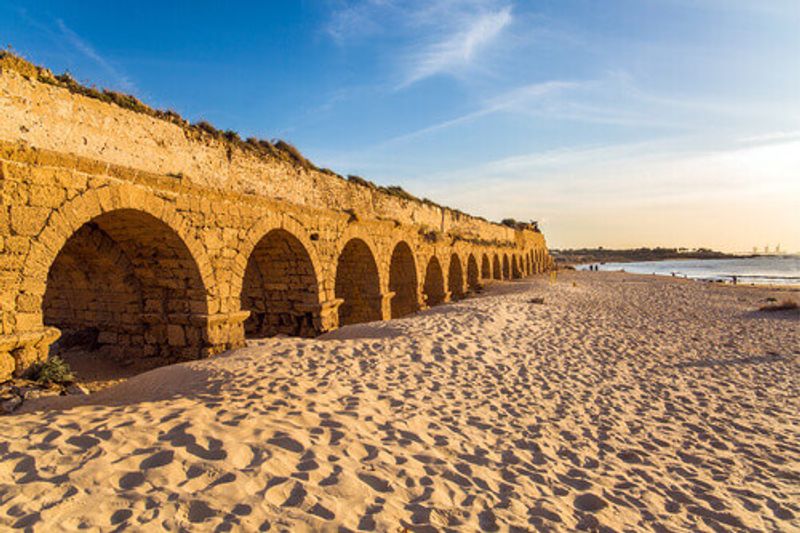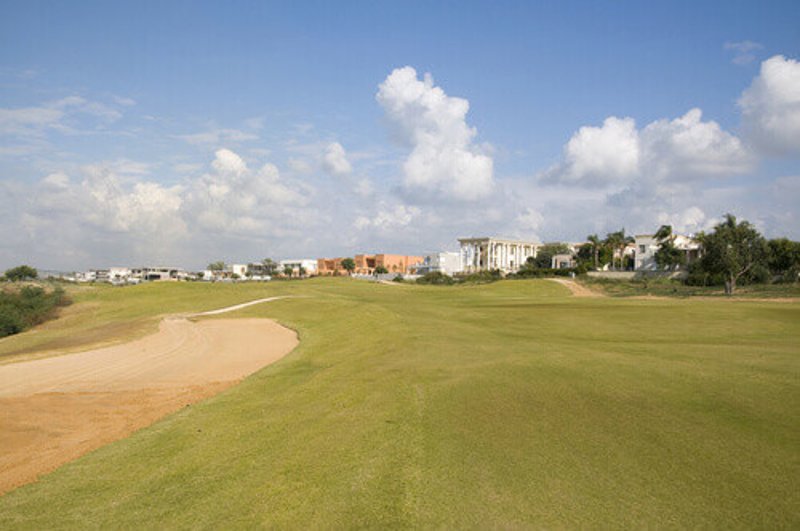Tucked between Tel Aviv and Haifa, Caesarea is a hallmark of Israel’s Roman heritage
Caesarea Maritima was an important harbour city in Roman times and was supported by a marvellous aqueduct system. From here, King Herod (of biblical infamy) managed the Judea Province of the Roman Empire.
Prior to the ascension of the Roman Empire, the port of Caesarea was controlled by the Phoenicians. It then changed hands between Cleopatra and the city’s namesake, Julius Caesar. Although the city’s pedigree is impressive, it’s most well known for its feats of engineering. King Herod envisioned a city with a deep-sea harbour, grand public buildings, markets, baths and temples, much of which still stands. The finished city was christened Caesarea in honour of the emperor. And fittingly, Caesarea’s position on the coastal plain between Europe, Asia and Africa meant that its harbour was crucial in the ancient world.
The city rose and fell over the millennia, hosting crusaders, Moroccan settlers, and eventually modern Arab-Palestinians, Jews and Christians. Today the Archaeological Park shares the land with an affluent residential neighbourhood and a beachside Kibbutz, Sdot Yam.
Start your exploration of Caesarea with a visit to the museum, housed in a reproduced crusader fortress. Watch a short presentation on the port’s history and construction to get your bearings. Next, make your way through the restored remains, starting with the Roman amphitheatre and the expanse of the Hippodrome. Tiny Caesarea housed in its prime some 125,000 people, and the tightly packed residents were pacified by major sports competitions akin to the Olympics. Here in the Hippodrome, athletes competed in dangerous but thrilling chariot races. On a windy day, if you squint just right, you can see ancient hooves pounding in the dust.
Take a moment to wander down the promenade and explore the artificially created harbour. From this vantage point, you can appreciate the challenge faced by the Roman hydro-engineers. The harbour is fully exposed to the Mediterranean without any natural shelter from strong wind, waves and currents. To counter this, two enormous concrete blocks serve as breakwaters. Keen divers can view the ingenious devices underwater but the engineering is just as impressive on land.
Following a visit to the harbour, round out your tour of the park with a swim at Aqueduct Beach. As well as being one of the most beautiful beaches in Israel, the remains of the ancient aqueduct system stretch along the shoreline making for some fantastic beachside viewing. In the Roman period, water flowed through the aqueduct from Mount Carmel, a full 15 km north east of the city. The Romans’ use of such advanced technology ensured that Caesarea was influential in ancient politics and trade.
Today Caesarea plays a more cultural role, hosting an international Opera Festival and a Jazz Festival each summer. Well-heeled visitors and residents also avail themselves of the 18-hole golf course. This contrast between the ancient and the modern makes little Caesarea an essential part of any Israeli experience.
